Opinion & Analysis
Hole-By-Hole: The Best and Worst Shots in Masters History (Front 9)
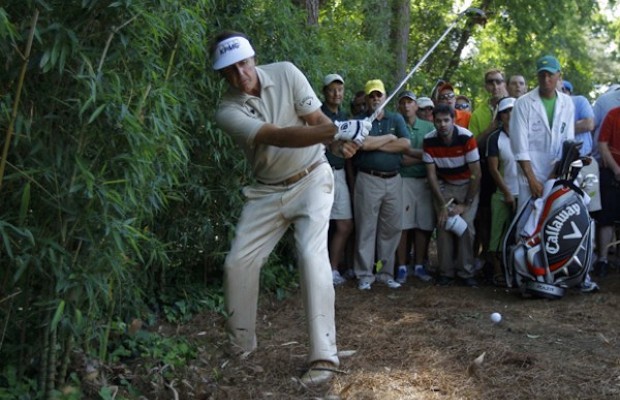
Everyone has their favorite moments from the Masters. But what are the best and worst shots in Masters history for each hole at Augusta National?
From shots that directly impacted the outcome of the tournament, to others that were impossibly shocking, miserable, or symbolic in their own right, every hole has a story to tell.
77 years, over 3,000 different players, and more than 1 million shots taken. These are the legendary bests and worsts forever etched in Masters lore.
Related: Hole-By-Hole: The Best And Worst Shots In Masters History (Back 9)
No. 1: Tea Olive — Par 4, 445 yards
The Best
It wasn’t a particularly long drive. It didn’t set up a scoring opportunity. But 39-years ago Lee Elder became the first black man to play in the Masters, and his opening drive on Tea Olive ripped through the color barrier at Augusta National once and for all.
By the late 1960s, Congress was troubled that no African-American had ever played in the Masters. And in 1973 they called for Augusta co-founder Clifford Roberts to extend a special invitation to Elder. The soft-spoken Elder would have none of it.
“I don’t want anything special,” Elder said. “I will make it on my own.”
And he did.
Elder qualified for the 39th Masters by winning the Monsanto Open. Though he’d miss the cut that year, Elder went on to play in six other Masters. But more importantly, Elder’s tee shot in 1975 paved the way for the likes of Calvin Peete, Jim Thorpe and Tiger Woods, and created a legacy that would make the game better for us all.
The Worst
“Slammin Sammy” Snead’s beautiful, yet powerful swing is considered by many to be the sweetest in the history of the game. But at the 25th Masters in 1961, Snead’s opening drive created a scene that almost gave new meaning to his moniker.
Snead didn’t give the group ahead of him time to clear the landing area, and his drive nearly shaved the whiskers off fellow competitor, Tommy Bolt. Bolt, known on Tour as “Terrible Tommy,” gave Snead a searing tongue-lashing and even considered “slammin” Sammy before cooler heads prevailed.
Bolt’s tirade wasn’t as frightening as say, Mike Tyson’s “I want to eat your babies” rant towards Lennox Lewis. And fisticuffs were ultimately avoided. But Snead’s psyche was rattled. The normally unflappable Snead missed a two-foot putt for par and went on to finish nine shots off the lead.
No. 2: Pink Dogwood — Par 5, 575 yards
The Best
Louis Oosthuizen doesn’t have a green jacket like 1935 Masters champion Gene Sarazen. But thanks to a preposterous double-eagle during the final round of the 2012 Masters, he does have a place in the “Albatross Club” alongside Sarazen.
Oosthuizen’s albatross was straight out of an EA Sports PGA Tour video game. Four-iron, 256 yards, ball hits short of the green, ball bounces favorably onto the green, ball catches the perfect slope, ball feeds some 90-feet towards the hole, ball drops gently over the front lip.
It was the fourth double-eagle in Masters history — the first ever on Pink Dogwood — and it gave Oosthuizen the outright lead. But when Bubba Watson’s slapstick hook-shot on the second playoff hole secured the 76th Masters championship, any thoughts of an “Oosthuizen Bridge” were laid to rest.
The Worst
David Duval tore up Augusta National during his practice rounds leading up to the 70th Masters in 2006. But after he duck-hooked his drive on No. 2 deep in the pines, you had to wonder if Duval himself wanted to duck under the ropes and just skip town.
Looking more like a weekend hacker than the former No. 1 player in the world, Duval needed six shots, including two penalty strokes just to reach the greenside bunker. By the time it was over, the result was a second-round, quintuple-bogey 10, the highest score ever on Pink Dogwood.
To his credit Duval turned back the clock with four birdies over a six-hole stretch later in the round. But the gallant effort was too little, too late. Duval finished his tournament 15-over par in one of the most bipolar days Augusta National has ever seen. And Duval remained an enigma, wrapped in a paradox, shrouded in Augusta pine.
No. 3: Flowering Peach — Par 4, 350 yards
The Best
Historically “Flowering Peach” has been more like a sour lemon when it comes to eagles surrendered. But in 2011, Charl Schwartzel became the only player in Masters history to eagle No. 3 en route to victory.
Schwartzel’s hole-out wedge from 114-yards set the tone for what followed. Schwartzel recorded the lowest final-round score of any Masters champion in two decades, and also became the first Masters champion to birdie the last-four holes on the final day.
The 75th Masters featured a Tiger Woods charge, a Rory McIlroy collapse and challenges by Jason Day and Adam Scott. But on this chaotic afternoon at Augusta, “Flowering Peach” was only sweet for Schwartzel.
The Worst
It’s usually a good idea to “get something off your chest.” For Jeff Maggert in 2003, it wasn’t. Maggert felt the sting of golf’s cruel side when his second shot on No. 3 clipped the front lip of a fairway bunker, backfired off his chest, and fell back tauntingly almost to the same spot he’d just hit from.
After a two-stroke penalty was assessed, Maggert’s next shot flew over the green, followed by another shot that ran 18-feet past the hole. And just that quickly, Maggert and his 54-hole lead was done. Maggert was inconsolable after his triple-bogey seven on “Flowering Peach.” It was probably the main reason he didn’t become the 67th Masters champion.
“I’d like to play that hole over again,” Maggert said afterwards. “I know that much.”
Golf, cruel? Really?
No. 4: Flowering Crabapple — Par 3, 240 yards
The Best
Jeff Sluman is a jockey-size 5-foot 7-inches, 141 pounds, and has always been one of the smallest players on Tour. But in 1992 Sluman hit one of the biggest shots in Masters history, and became the only player to ever record a hole-in-one on Augusta’s formidable fourth hole.
In the first round of the 56th Masters, Sluman grabbed a 4-iron and struck his ball into swirling winds deceptive enough to complicate club selection.
“It looked pretty good when it left the club,” Sluman said. “But you never dreamed it was going in.”
Sluman’s ball landed 20-feet short of the hole, slowly crawled uphill and barely fell into the cup. After Sluman’s ace, a fan in the crowd yelled out asking for the ball, and the good-natured Sluman obliged, tossing it into the gallery. The fan was his mom.
The Worst
You know the expression “you have to see it to believe it?” That probably sums up the bizarre sequence of shots Phil Mickelson hit on the fourth hole of the 76th Masters in 2012. After Mickelson’s tee shot clanked off the grandstand and into Augusta’s wooded foliage, it went beyond “Phil being Phil.” It went “Lefty being Righty.”
Mickelson turned his wedge upside-down and played right-handed. On his first attempt, the ball dribbled out about a foot. Mickelson nearly axed himself in the leg on an awkward second attempt. And his third attempt landed in the same greenside bunker Mickelson was aiming for in the first place off the tee.
Mickelson’s bunker shot nearly dropped in, but the eventual triple-bogey six doomed any chance Mickelson had to win his fourth green jacket. Mickelson fell from one shot off the lead to five shots back. That goes to show no matter who you are or how well things are going, anything can happen at Augusta National.
No. 5: Magnolia — Par 4, 445 yards
The Best
Jack Nicklaus owns nearly every significant Masters record there is. Most wins, most runner-ups and most top-5 finishes all belong to Jack. And in 1995, Nicklaus became the only player in Masters history to eagle the same hole, twice, in the same tournament.
Eagle No. 1 came during the first round of the 59th Masters from 185 yards out. Nicklaus grabbed his 5-iron, fired at the pin and his ball found the hole on the fly. Prior to that, Nicklaus hadn’t eagled “Magnolia” in 36 previous Masters appearances. But Nicklaus wasn’t done yet.
Lightning struck twice for Nicklaus in the third round when he pulled a 7-iron from 165 yards for his second eagle of the round. Nicklaus admitted afterwards he aimed for the middle of the green because of a difficult pin position, but his ball landed a few feet from the hole instead and rolled in. It’s good to be Jack.
The Worst
Practice? What are we talking about, practice? Before there was Allen Iverson, there was Dow Finsterwald. And yes, Finsterwald was talking about practice. Because sometimes practice makes perfect. But other times it destroys your chance to become a Masters champion.
In the opening round of the 24th Masters in 1960, Finsterwald made a routine par on “Magnolia.” He pulled his ball from the cup, dropped it back on the putting surface and hit it off the green in the direction of the sixth tee. It was the worst shot Finsterwald never had to take.
The next day Finsterwald was assessed a retroactive two-stroke penalty for what was deemed an illegal practice stroke. Finsterwald wasn’t disqualified since his practice stroke didn’t occur with the ball in play. But he finished one shot behind eventual winner Arnold Palmer, costing him the opportunity to play Palmer in an 18-hole playoff.
No. 6: Juniper — Par 3, 180 yards
The Best
The Open Championship hadn’t been played in three years, the U.S. Open was cancelled and the PGA Championship was postponed. The world was at war and a hero was needed. In a 1942 playoff at the ninth Masters, Byron Nelson obliged.
Nelson was visibly pale and exhausted, suffering from a severe stomach virus before the playoff began. Ben Hogan offered to postpone the playoff, but Nelson refused. Down three shots to Hogan to start No. 6, Nelson stuffed an iron close to the pin for birdie, setting off a stretch of golf that can only be called “cruel in perfection.”
Nelson went 6-under par over the next eight holes to hold off Hogan by one shot. Hogan called it the best stretch of golf he’d ever seen. Nelson’s “never give up” mentality gave the country something to rally around, and made Nelson one of the greatest Masters champions of all-time.
The Worst
Jose Maria Olazabal was one-shot off the lead in the second round of the 1991 Masters when his tee shot fell short of the green on No. 6. It seemed harmless enough until Olazabal needed four more shots just to get his ball on the putting surface.
The green on “Juniper” is sloped downward to such degree, that players over the years have joked “an elephant must be buried beneath it.”
Olazabal’s first chip rolled back to his feet. His second shot was a carbon copy. Even his third shot rolled off the back edge. Olazabal took a quadruple-bogey seven for the hole. And his safari on No. 6 played a key role in finishing one stroke behind the 55th Masters champion Ian Woosnam.
No. 7: Pampas — Par 4, 450 yards
The Best
After Byron Nelson won the fourth Masters Tournament in 1937, the shot that had everyone talking was his opening tee shot on No. 7. He drove the green. Nelson went on to win a second green jacket a few years later, but he’d never again reach the green in one at “Pampas.”
The birdie on No. 7 certainly contributed to Nelson’s championship, but just as importantly it highlighted the fact that something had to be done about the pint-sized, drive and pitch par-4 that only measured 340 yards.
A few years later, “Pampas” was lengthened to 365 yards. And changes in 2002 and 2006 brought No. 7 to its current 450 yards. Nelson is often credited for being “The Father of the Modern Golf Swing.” But he also might be credited for being the father of present-day 7th hole at Augusta National.
The Worst
Charles Coody had the reputation for being one of most disciplined players on Tour, and was the last player you’d expect to come unglued. But in the first round of the 36th Masters in 1972, that’s exactly what happened to the defending champion.
Coody just recorded an ace on No. 6, so he should have been relaxed. But Coody sprayed his drive right, then hooked his approach left. And hitting out of the greenside bunker turned into an episode of the “Twilight Zone.”
Coody nearly whiffed at his first attempt. He barely moved the ball on his second attempt. And Coody’s third attempt unbelievably also stayed in the sand. Coody needed a fourth bunker shot to get up and down for the highest score ever recorded on No. 7, a triple-bogey seven.
No. 8: Yellow Jasmine — Par 5, 570 yards
The Best
Bruce Devlin never won a Masters championship. But in the first round of the 31st Masters in 1967, he became only the second player to record a double-eagle in Masters history.
Devlin was dealing with painful blisters on both his feet that afternoon, and never really played himself into contention. Devlin would later say it was the only good shot he hit all day. A 4-wood, 248 yards out, that hit the front of the green and tracked into the hole.
When Gene Sarazen was told of Devlin’s double-eagle, he said Devlin’s shot was harder than his own in 1935, because Devlin couldn’t even see the target he was shooting for. For the record, Devlin’s was also 13 yards longer.
The Worst
Augusta National sinks its teeth into every player eventually: even the Masters foremost champion, Jack Nicklaus. Nicklaus recorded his first triple-bogey during the second round of the 34th Masters in 1970.
Nicklaus was just three shots off the lead at the time, and had a clean look at getting on in two, but uncharacteristically hooked his approach shot into the woods short of the green. Making matters worse, Nicklaus couldn’t find his ball, forcing him to take a stroke and distance penalty.
Obviously frustrated by the turn of events, Nicklaus played his shot over, coming up short of the green again, and three-putted for a triple-bogey eight. Nicklaus played well enough over the final 46 holes to finish in the top-10, but his fourth green jacket would have to wait.
No. 9: Carolina Cherry — Par 4, 460 yards
The Best
What do you do if you’re playing the final round of a major in a tournament no one gives you any chance of winning, and you’re facing what can only be described as a must-make putt to keep any hope of winning alive? If you’re 46-year old Jack Nicklaus in 1986 at the 50th Masters, you crack a joke.
Jack Nicklaus stepped away from his 12-foot birdie opportunity on “Carolina Cherry” when he heard the crowd on No. 8 erupt for Tom Kite’s eagle pitch-in. Nicklaus stepped away again when a second roar broke out from No. 8, this time for Seve Ballesteros’ eagle chip-in.
Before Nicklaus finally addressed his putt, he turned to the gallery nearest him and said, “Let’s see if we can make that same kind of noise here.” Nicklaus’ putt hit the hole dead center, and set the tone for a back-nine charge that would bring Nicklaus the loudest canon fire roar of all: the roar of winning his sixth green jacket and 18th career major.
The Worst
Lanny Wadkins has always been supremely confident in his abilities on the golf course. But there’s a fine line between confidence and carelessness, and Wadkins crossed that line during the second round of the 55th Masters in 1991 when he missed the shortest putt in Masters history.
Wadkins had just missed a four-foot putt for par on “Carolina Cherry” and was left with a tap-in. Not a pressure putt, not a knee-knocker, but a gimme just inches from the cup. So naturally Wadkins decided to putt… backhanded.
Wadkins completely missed the cup, of course. And adding insult to injury, his ball rolled four feet past the hole, leaving him with the exact same putt he had for par just moments earlier.
- LIKE0
- LEGIT0
- WOW0
- LOL0
- IDHT1
- FLOP0
- OB0
- SHANK0
Courses
The BEST hidden gem links courses in the UK & Ireland

Another Open Championship has come and gone and links golf was once again in the spotlight at Royal Troon! For those who have never played a links course (like myself), it sparks a desire to fly across the pond to experience it for ourselves. While a golf trip to the UK or Ireland is a bucket-list item, most people look to play the big-name courses (Old Course, Carnoustie, Lahinch, Royal Portrush,etc.), but don’t realize they can get a similar experience by traveling to some of the lesser known destinations where you will find some of the purest links courses in the world. With this in mind, here are our picks for the best hidden gem links courses you should play when you book a UK or Ireland trip:
IRELAND
We start our list off with a 36-hole club in the Northwest of Ireland, a remote area of the Emerald Isle that is known for its rugged terrain and spectacular scenery. Bordering the Wild Atlantic Way, Ballyliffin is relatively newer (est. 1947) but offers golfers one of the purest links golf experiences anywhere in the country. While not easy to get to, the two courses onsite (Old and Glashedy) are well worth the travel with large dunes shaping the fairways that overlook the North Atlantic Ocean and a myriad of pot bunkers everywhere you look. Even Rory McIlroy believes that “Ballyliffin’s two courses are a must play on any golf trip to Ireland.” and we tend to agree.

How to incorporate Ballyliffin in a golf trip:
Stay:Ballyliffin Lodge, Hotel & Spa
Play: Old Links & Glashedy Links at Ballyliffin, and Old Tom Morris Links or Sandy Hills Course at Rosapenna
The next course on the list is in the Sligo area of the Northwest where we find Enniscrone, roughly 3 hours (by car) south of Ballyliffin. Like many links courses, Enniscrone was originally a 9-hole course when it was opened in 1918 before an additional 9 holes were added 12 years later. In 1970, Eddie Hackett was tasked with redesigning the course to help the two 9-hole courses flow effortlessly into one 18 hole layout. A big feature that can be seen throughout your round here are the towering dunes that shape the course and protect some holes from the ocean winds. Built right out of the landscape of the dunes bordering the sea, the course has a lot of undulation in the fairways and greens with some elevated tee boxes providing unreal views of the natural land.

How to incorporate Enniscrone in a golf trip:
Stay: The Glasshouse Hotel, Sligo
Play: Enniscrone, County Sligo, and Donegal
Additional Courses: Strandhill, Carne, and Narin & Portnoo
Another fantastic gem on the Northwest coast of Ireland is the NEW (2020) St. Patricks Links at Rosapenna Hotel & Golf Links. The land was purchased back in 2012 which was already a 36-hole facility and Tom Doak was brought in to reimagine the property to the layout it currently is today. Large sand dunes shape the front 9 holes before heading back through some more subtle dunes back towards the clubhouse. The course offers elevation changes with some tee boxes sitting atop the dunes offering spectacular views of Sheephaven Bay and beyond. With two other courses and a fantastic hotel on property, this destination is all you could ever ask for.

How to incorporate St. Patricks in a golf trip:
Stay: Rosapenna Hotel & Golf Links
Play: St. Patrick’s Links, Sandy Hills Course , and Old Tom Morris Links (all at Rosapenna)
For our last hidden gem in Ireland, we head 30 minutes north of the country’s capital, Dublin, to The Island Club. Built along rugged terrain and the highest sand dunes on the east coast of Ireland, the Island Club is situated on a small peninsula surrounded by water on three sides providing a difficult challenge, especially with the winds. Founded in 1890, the Island Club continues to be ranked in the Top 10 courses in Ireland and has held some Amateur Championships and Open Championship Regional Qualifiers.

How to incorporate The Island Club in a golf trip:
Stay: The Grand Hotel, Malahide
Play: Island Club, Portmarnock Old, County Louth
Additional Courses: Royal Dublin
SCOTLAND
Located along “Scotland’s Golf Coast” of East Lothian is where we find the classic links of Dunbar. Opened in 1856 with only 15 holes, this is one of the many courses in Scotland that Old Tom Morris had a hand in crafting. Laid out along rocky and rocky terrain, the course is only 6500 yards long and while not long by modern standards, the course requires shot making and proper club selection to play well. The course has held many national and international tournaments including a few rounds of The Open Final Qualifying.

How to incorporate Dunbar in a golf trip:
Stay: No. 12 Hotel & Bistro
Play: Dunbar, Gullane (No.1), North Berwick
Additional Courses: Craigielaw, Kilspindie, Gullane (No.2, No. 3)
The next course on our list brings us to the Scottish Highlands, one of the lesser traveled destinations in Scotland, but still home to some amazing links courses including Cruden Bay! Located 25 miles north of Aberdeen on the east coast of the Highlands, Cruden Bay was opened in 1899, although history would indicate golf has been played at the property since 1791. Another Old Tom Morris design, the course is consistently ranked in the Top 25 of courses in Scotland and it is easy to see why. At only 6600 yards, it is relatively short, but the natural lay of the land provides elevation changes, punchbowl greens, and some large, 3-story high dunes that offer spectacular views for a classic links experience.

How to incorporate Cruden Bay in a golf trip:
Stay: Leonardo Hotel Aberdeen
Play: Cruden Bay, Trump International Links, Royal Aberdeen
Additional Courses: Murcar
We head back to the Highlands just north of Dornoch to where we find Brora Golf Club. Similar to a lot of links courses, Brora opened as only 9 holes in 1891, but that only lasted for 9 years before an additional 9 was added in 1900 before a James Braid redesign in 1924. At just over 6200 yards, this is one of those courses that will make you appreciate links golf in Scotland with cattle and sheep roaming freely around the property. The course is a typical links routing with the front 9 going out and the back 9 coming back to the clubhouse. The defense of the course is the wind (naturally), but the greens are relatively small with pot bunkers standing guard to catch errant approach shots.

How to incorporate Brora in a golf trip:
Stay: Royal Golf Hotel, Dornoch
Play: Brora, Royal Dornoch – Struie & Championship
Additional Courses: Golspie, Tain
Staying in the Scottish Highlands, the last Scotland links gem on the list is just outside of Inverness at The Nairn Golf Club. The narrow fairways are fast and firm leading to decent sized, tricky greens that roll true, but are guarded by devious pot bunkers. The first seven holes play right along the water and with not a ton of elevation changes, spectacular views across the Moray Firth can be seen throughout the course. With fantastic course conditions throughout the season, this fantastic links is an absolute must-play when visiting the Highlands.

How to incorporate Nairn in a golf trip:
Stay: Kingsmills Hotel, Inverness
Play: Nairn, Castle Stuart (Cabot Highlands), Fortrose & Rosemarkie
Additional Courses: Nairn Dunbar, Moray

Golfbreaks by PGA TOUR highly recommends you start planning your trip across the pond AT LEAST 12-18 months in advance in order to secure tee times and hotel rooms over the dates you desire. With more and more people taking up the game of golf, these bucket list trips have already become extremely popular and will continue to gain interest so make sure to start planning early!
RELATED: Open Championship courses you can play (and when the best time to book is)
Editor’s note: This article is presented in partnership with Golfbreaks. When you make a purchase through links in this article, GolfWRX may earn an affiliate commission.
- LIKE18
- LEGIT0
- WOW0
- LOL1
- IDHT0
- FLOP3
- OB0
- SHANK3
Courses
Open Championship courses you can play (and when the best time to book is)

The final major of 2024 is nearly here as the top golfers head to Scotland’s southwestern coast to battle for the claret jug at Royal Troon. Golf’s original major dates all the way back to 1860 and has been played at 14 different courses throughout the United Kingdom (yes, this includes Northern Ireland) providing countless memories including celebrations, heartbreak, and unique moments that will never be forgotten (looking at you Jordan Spieth).
With The Open teeing off less than a week from now, we wanted to highlight some of The Open Championship’s finest links courses that should play when you make the journey to golf’s homeland:
- Old Course at St. Andrews
- Carnoustie
- Muirfield
- Royal Portrush
- Royal Troon
- Royal Birkdale
- Royal St George’s
Old Course at St. Andrews

Do we even need to say anything else? The “Home of Golf”, host of 30 Open Championships, the most coveted tee time in the WORLD, there are a million reasons to have St. Andrews on your links golf bucket list. From the double greens, to the tee shot over the Old Course Hotel, to the walk up 18th fairway with the town buildings framing a picturesque scene (especially at dusk), every golfer should make the voyage to St Andrews at least once in their life.

Carnoustie

Carnoustie – Championship Course
Roughly 25 miles north of St. Andrews lies the devious links of Carnoustie, often recognized by the large white Carnoustie Golf Hotel as the backdrop of the 18th green. While the course has only hosted The Open 8 times, it is considered to be one of the hardest layouts in The Open rota (just ask Jean Van de Velde) although not that long, playing just under 7000 yards from the tips.
Muirfield

Located right next to this week’s host of Scottish Open (The Renaissance Club), this fantastic links layout has hosted the prestigious Championship 16 times since 1892. The narrow fairways and penal rough requires precise shots off the tee while avoiding the devious pot bunkers is a must. The course is set away from the coastline so you won’t get the sweeping ocean views, but a round at Muirfield is one the premier tee times in all of Scotland (so make sure you book early – 12-18 months at least).
Royal Portrush

A view of the new 572 yards par 5, seventh hole designed by Martin Ebert on the Dunluce Course at Royal Portrush Golf Club the host club for the 2019 Open Championship in Portrush, Northern Ireland. © 2018 Rob Durston
Our next stop brings us across the Irish Sea to the northern coast of Northern Ireland and the popular Royal Portrush. Having hosted The Open only twice in its illustrious history, Royal Portrush is a golfer’s dream with 36 holes of pure links golf set against a gorgeous backdrop of the ocean and cliffs. The Open Championship will return to Portrush in 2025 and YOU CAN BE THERE to watch it all in person!
Royal Troon

TROON – JULY 26: General view of the ‘Postage Stamp’ par 3, 8th hole taken during a photoshoot held on July 26, 2003 at the Royal Troon Golf Club, venue for the 2004 Open Championships, in Troon, Scotland. (Photo by David Cannon/Getty Images)
The host of this year’s Open Championship, Royal Troon is home to one of the best par-3 holes in all of golf, “The Postage Stamp.” A downhill 125-yard tee shot to a minuscule green surrounded by bunkers on all sides makes it one of the more challenging holes. Another hole that adds to the challenge is the 601-yard par 5 that used to be the longest golf hole in Open Championship history. This year will be the 10th Open Championship held at Royal Troon, the first since 2016 when Mickelson and Stenson had a battle for the ages in the final round.
Royal Birkdale

For the next course on the list, we have to head down to the northwest coast of England just outside of Liverpool. Consistently ranked in the Top 10 courses in all the UK, this 10-time host of The Open has hosted many other prestigious events such as Ryder Cups, Women’s Opens, and more! The course is laid out with fairways running through flat-bottomed valleys surrounded by high dunes which provide many blind shots throughout the course. The Open returns to Royal Birkdale in 2026 so it won’t be long before it is back in the spotlight.
Royal St. George’s

For the final course on our list, we are staying in England, but heading across to the southeastern side of the country to Kent. Royal St. George’s is 4th on the list of most Open Championships hosted with 15 (1 behind Muirfield) the most recent being Collin Morikawa’s victory in 2021. RSG is the only active course on The Open rota in this part of the UK, but two former hosts (Prince’s and Royal Cinque Ports) are within 3 miles of the property. The expansive course is laid out with holes separated by dunes with heavy rough, undulating fairways, and deep pot bunkers to challenge your game. While it may not be mentioned in the discussions of St. Andrews, Carnoustie, and the like, Royal St. George’s is still a Championship layout that is worth the trip across the pond.

With these big-name courses in such high demand, it is important to note that if you want to play them, you need to start planning your trip early. Golfbreaks by PGA TOUR, the world’s #1 rated golf tour operator, suggests planning and booking your trip at least 12-18 months in advance in order to secure a tee time at the courses you want. The UK & Ireland specialists at Golfbreaks by PGA TOUR have the knowledge to help tailor the perfect golf trip for your group so you can play big-name courses and hidden gems you might not have heard of. If you’re ready to start planning your bucket list trip across the pond, make life easier and go with Golfbreaks by PGA TOUR.
Editor’s note: This article is presented in partnership with Golfbreaks. When you make a purchase through links in this article, GolfWRX may earn an affiliate commission.
- LIKE12
- LEGIT1
- WOW0
- LOL0
- IDHT0
- FLOP0
- OB0
- SHANK0
Courses
Ryder Cup 2025: Crossing to Bethpage – New York State Park golf, Part 1

The 2025 Ryder Cup matches will be held over the sprawling, bruising, Long Island acreage known as Bethpage Black State Park Golf Course. The course has hosted multiple national championships, most recently the 2019 PGA Championship. In September 2025, Bethpage Black will welcome teams from the USA and Europe to contest the 45th Ryder Cup matches. Team Europe, the defending champions, will be led again by captain Luke Donald. The U.S. PGA has not yet announced the name of its leader, yet all sources and speculations point to a 15-time major champion and an eight-time participant in the biennial event.
Bethpage Black will join Oak Hill Country Club in Rochester (1995) as the second Empire State course to host the event. The Ryder Cup matches were played in the metropolitan New York area once before, in 1935 at the Ridgewood Club, in Paramus, New Jersey. It’s fair to say that metro NYC is due to host this world-stage, golf event. I can’t wait. The USA’s loss to Europe in 2023 adds to the considerable drama.
What makes Bethpage Black an outlier in the world of championship golf, is its mere existence. It’s a state park golf course, one of five on property, each with a colorful name. The Red, Green, Blue, and Yellow join big brother Black as outstanding tests of golf in Farmingdale. Of the five, only the Green was not originally built as a state course. The Lenox Hills Country Club, designed by Devereux Emmet, opened in 1923. By 1932, the club had closed and the land had become property of the state. Its birth date made the Green the oldest of the five courses. New York State began to build on a series of adjacent parcels, guided by the hands of Alber “A.W.” Tillinghast, Joseph Burbeck, and Alfred Tull. The Yellow course, built entirely by Tull, was the last of the five to open.
State park courses just don’t hold major championships. Private clubs and elite resorts are the typical sites that receive the nod from the world’s golf bodies. It’s a testament to the lovers of Bethpage, the New York state government, and the PGA of America (among others) that Bethpage is as good as it is, and that it continues to improve. It’s a fitting site for the 2025 Ryder Cup matches, but the 2025 Ryder Cup matches need a beginning to their story. I’ll do my best to provide it.
- Bethpage Yellow Golf Course
- Bethpage Black Golf Course
- Bethpage Red Golf Course
- Bethpage Yellow Golf Course
- Bethpage Black Golf Course
- Bethpage Green Golf Course
- Bethpage Blue Golf Course
- Bethpage Red and Black Golf Courses
- Bethpage Green Golf Course
- Bethpage Red Golf Course
The quintet of courses near Bethpage, New York, is just the beginning of the New York state park golf course system. 19 parks in total offer golf from the tip of Long Island, to the shores of Lake Ontario, through the Catskill mountains, to my home town. I’m a Western New York guy. The Buffalo area has been my home for most of my 58 years on the golf ball known as Earth. I live two miles from the westernmost, state park golf course: Beaver Island. The Beav, as everyone calls it, was designed by William Harries. It opened the year I was born, which means that it is close to 60 years old! Unlike the Bethpage property, where topography is king, the Beav is a flat course, albeit full of enough interest to bring you back for more.
As I considered the magnitude of the state park system, I realized that golfers who frequent those 19 state parks can point to their home course and say, “You know, the Ryder Cup will be at a state park course next year.” I started to count on my fingers, the number of state park courses I had played: Beaver Island, Green Lakes (Syracuse), James Baird (Poughkeepsie), and the five at Bethpage, I realized that I had played eight of the 23 total courses, and had visited a mere four of the 19 parks.
Bethpage is the only, multi-course state park across the Empire State. Other venues range from pitch-and-putt, to nine-hole, to regulation 18-hole courses. The majority occupy nice tracts of land, and feature 18 holes of memorable, enjoyable golf. PGA Tour professionals Joey Sindelar and Mike Hulbert grew up on one of those courses, and Dottie Pepper spent a bit of time on another, near her hometown.
There will be many stories that trace the path to Bethpage and its 2025 Ryder Cup, and I look forward to reading and hearing them. This one is my own, and I’m proud (and a little frightened) to undertake it. I’ll visit each of the remaining parks over the next 16 months, and report in with images and words that tell the story of each park and its golf course.
The Ones I’ve Played
The Bethpage Five
As mentioned above, I’ve played eight of the 23 courses, but the majority of that number is owed to a 2011 pilgrimage to Long Island. The Black had just hosted its second US Open championship, and the ink for the 2019 PGA Championship was not yet printed. I spoke with a Bethpage caddy, in anticipation of the trek. I wrote a series of articles on the courses on my own site, BuffaloGolfer. Down the road of this, current series, I’ll discuss the most poignant piece that I connected with Bethpage. That’s a story for another time. After all, Bethpage is a five-course meal.
It’s safe to say the the Bethpage property is unlike any other, municipal, golfing space in the world (at least, those not named the Links Trust of St. Andrews!) The park encompasses nearly 1500 acres of wooded land and offers much beyond golf to its visitors. As pilgrimages go, Bethpage is it. For a New York state resident, on a weekend, it would cost a total of $257 dollars … to play all five courses. Even for those outside the state, the trip to Bethpage is worth consideration. Each course rambles over uneven, heaving land. Holes carry along falloffs and bend unexpectedly around corners. Greens are benched into hillsides and settled into valleys. All five courses remind you of the others, yet none of them says to you “You’ve played this course before.”
James Baird State Park
One of the hats that I wear, is high school golf coach. Each spring, golfers from my team travel to Poughkeepsie to play the James Baird State Park golf course. Pronounced “Bard,” the course was opened in 1948, after a middle-aged, Robert Trent Jones, senior, put pen to paper to lay out the course. Jones was about to become a household name, as he would offer renovation advice to many of the country’s classic clubs. He was most famously associated with the Oakland Hills Country Club near Detroit, the host site of the 1951 US Open. You know, the one where Ben Hogan purportedly gasped “I’m glad I brought this course, this monster, to its knees.”
Trent didn’t leave a monster in Poughkeepsie. What he left was something that locals call Baby Bethpage. The James Baird course is blessed with topography similar to its five-course cousin, but it offered a challenge that Bethpage does not: a huge expanse of marsh across the belly of the property. There was not going over nor through it, so Jones simply went around it. He created something that he never, ever did: a short par three. Jones was a fan of the brutish, 200-yard plus, all-carry, par three hole. For the third hole at Baird, he had all of 120 yards, and it was downhill! Jones placed a green in the marsh, connected to the mainland by an earthen bridge. He then turned north for a time, then returned south, outside the marsh. Trent Jones had another stretch of tricky land to navigate, this time, on the inward half. He brought a trio of holes (pars 4-3-5) through a challenging corner of the property, before returning to the open meadow that hosts the majority of the layout.
James Baird is a tremendous golf course, one that prepares our high school competitors well for the next step: the state federation championship at, you guessed it, Bethpage Black. Six golfers move on to compete against other, high school divisions, at the big brother of them all.
- James Baird State Park
- James Baird State Park
- James Baird State Park
- James Baird State Park
- James Baird State Park
- James Baird State Park
- James Baird State Park
- James Baird State Park
- James Baird State Park
- James Baird State Park
- James Baird State Park
- James Baird State Park
Green Lakes
The Baird course came to life 13 years after Trent Jones opened his first, New York state parks course. Originally from Rochester, New York, Trent ventured 90 minutes east to Manlius, near Syracuse, in 1935, to lay out one of his first ten courses. RTJ was gifted the magnificent land that abuts the two glacial lakes in central New York. The lakes are meromictic, which we all know means that surface and bottom waters do not mix in the fall and spring, as happens with dimictic lakes.
Trent Jones placed his clubhouse and finishing greens (9 and 18) in an interesting portion of the property. The ninth hole is an uphill, par five that plays fifty yards longer than its measured distance. Once home to upper and lower greens, the lower has been expanded and enhanced, and the upper is now abandoned. On the other side of the clubhouse, the sneaky 18th moves out of a corridor of trees, into the open space beneath the clubhouse. It’s a bit reminiscent of the 18th at Bethpage’s Green course. It’s not a long hole, yet when you walk off with five or six on your card, you wonder where you went astray.
- Green Lakes State Park
- Green Lakes State Park
- Green Lakes State Park
- Green Lakes State Park
- Green Lakes State Park
- Green Lakes State Park
- Green Lakes State Park
The front half of the course plays along a vast meadow, above Green Lake, the larger of the two, nautical bodies. The inward side forages among the tree above Round Lake, before finally emerging at the home hole. The apparent contrariety of the two nines is resolved through expansion of fairway corridors on the treed nine, and the constriction of playing paths with bunkers and doglegs, on the exposed side.
If you’re a walker, Green Lakes will make you a fit one. It will also demand all the clubs and shots that you can fit in your bag.
Beaver Island
“Tame” isn’t the proper term to describe Beaver Island, the state park course near my home. I believe that “calm” is a better term. It may seem ironic, given that the 1965 course occupies a tract of land at the southern tip of Grand Island, where the Niagara River splits east and west, before reuniting at the north end. When we think of the Niagara, we think of the mighty rapids and cascades near the brink and bottom of the falls. At the southern split of the river, however, you can throw a canoe in the water and have a paddle. Beaver Island knows that it is adjacent to the river, but you never get the sense that this golf course borders water. I’ve redesigned the park hundreds of times in my head, moving the golf course to the banks of the river, where the trails, beach, playground, and other amenities are currently found. In the end, not every great golf course can, nor should, be built.
William Harries trained under the famed competitor and architect, Walter Travis. Despite this exposure to the master, Harries went his own way with his golf courses. The most striking difference is in green construction. While Travis was extraordinarily creative and daring, Harries was the polar opposite. His greens are routinely flat and easy to navigate.
He designed a number in the western New York area, including Brookfield Country Club. Originally known as Meadow Brook, the club hosted the 1948 Western Open, won by the aforementioned, Ben Hogan. The majority of Harries’ work was in municipal courses, and he designed Sheridan Park for the town of Tonawanda. That course hosted the 1962 USGA Public Links championship.
- Beaver Island State Park
- Beaver Island State Park
- Beaver Island State Park
- Beaver Island State Park
- Beaver Island State Park
- Beaver Island State Park
- Beaver Island State Park
- Beaver Island State Park
On Grand Island, Harries traced his layout around three ponds. The massive, western one, comes into play on the second through fifth holes. The middle one plays games with the approach to the eighth green. The final one, on the inward side, forces golfers to carry their tee shot over water, to the 14th fairway. Beaver Island bears no resemblance to the topography of the other locales mentioned previously. There is no heaving, no tumbling, no turbulence, along its fairways. Beaver Island is more St. Andrews in its flattish presentation, which makes it an honest, what-you-see, sort of golf course. It’s an enjoyable walk in the park, a not-too-demanding one.
Part Two: south-central New York-Soaring Eagles, Chenango Valley, Indian Hills, and Bonavista
- LIKE3
- LEGIT0
- WOW0
- LOL0
- IDHT0
- FLOP0
- OB1
- SHANK0
-

 Product Reviews2 weeks ago
Product Reviews2 weeks agoThree Swing Challenge: Testing the Edel Array F-2 putter
-

 Equipment2 weeks ago
Equipment2 weeks agoWhat clubs do equipment free agents choose to use on tour? We found out
-

 News2 weeks ago
News2 weeks agoHighlights from the Wilson Golf Product Testing and Fitting Experience at Pinehurst
-

 News2 weeks ago
News2 weeks agoDavis Thompson’s winning WITB: 2024 John Deere Classic
-

 19th Hole2 weeks ago
19th Hole2 weeks agoMajor champ ‘disappointed’ not to be chosen as U.S. Ryder Cup captain
-

 Whats in the Bag3 days ago
Whats in the Bag3 days agoXander Schauffele’s winning WITB: 2024 Open Championship
-

 19th Hole2 weeks ago
19th Hole2 weeks agoLIV pro explains how he believes players are ‘cheating’ on DP World Tour
-

 19th Hole2 weeks ago
19th Hole2 weeks agoIan Poulter explains decision to skip Open Championship qualifying

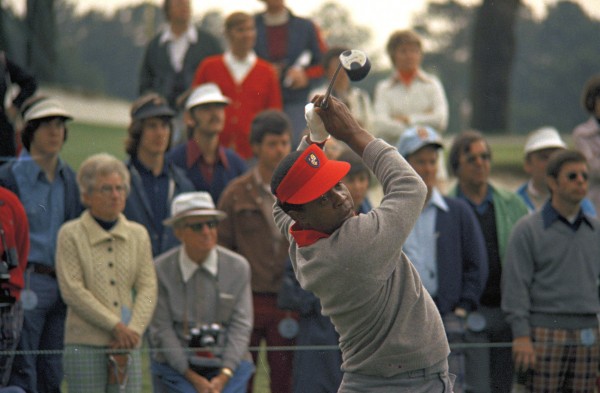
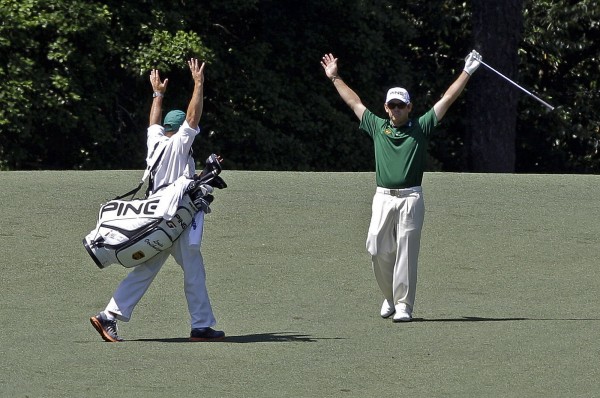
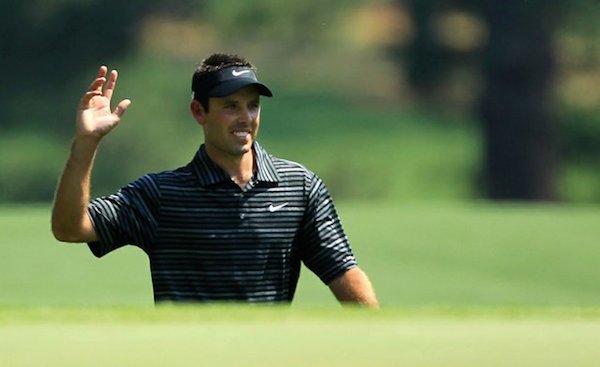
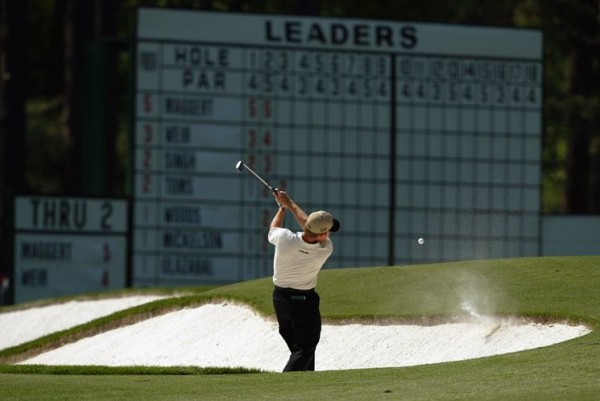
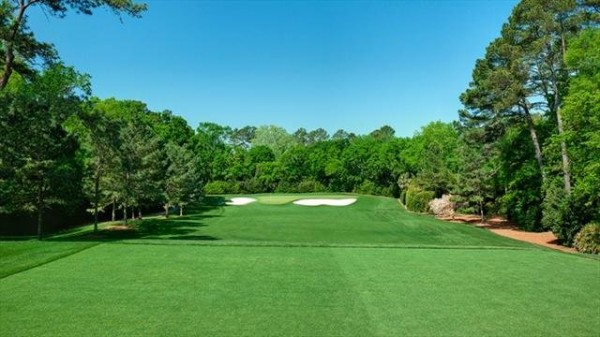

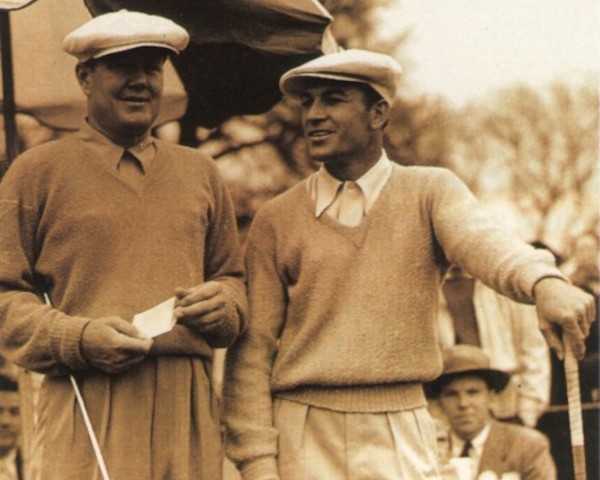
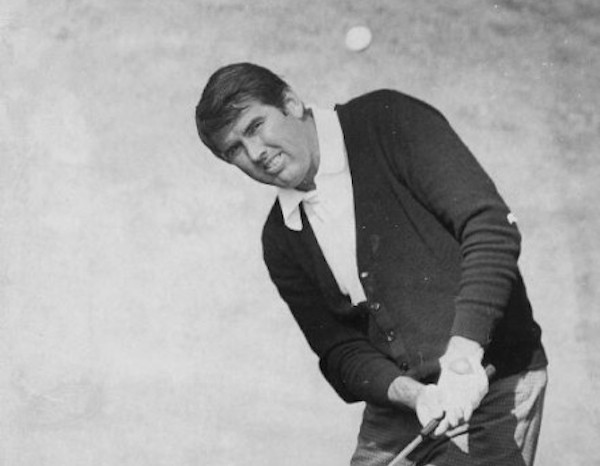

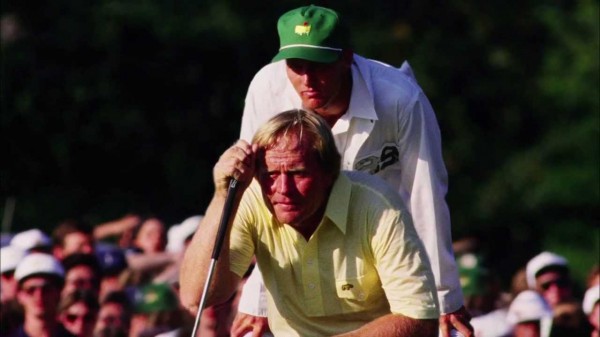




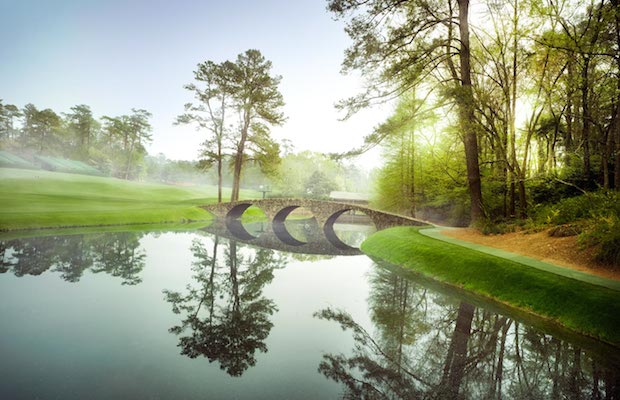
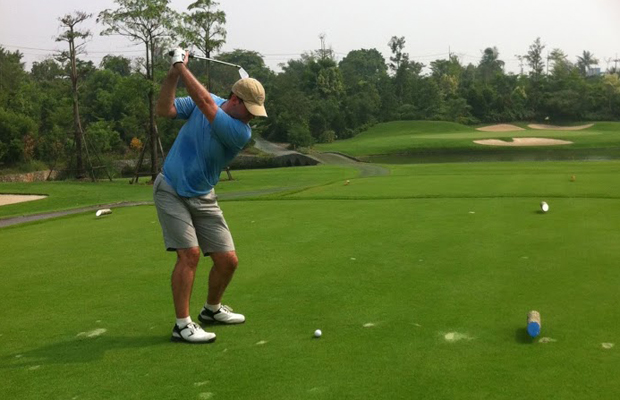
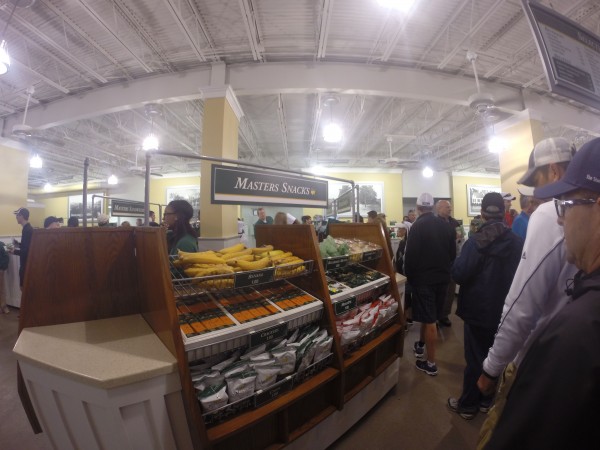
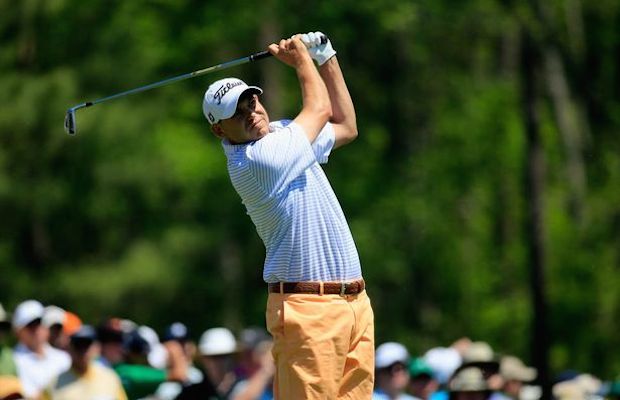
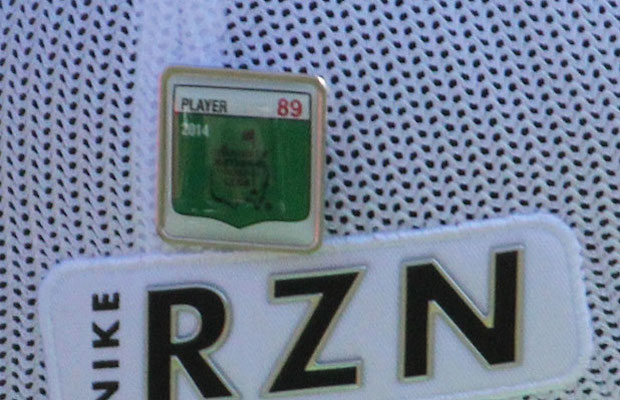























































Pete McGill
Dec 16, 2018 at 3:22 am
I remember Watkins’ putt like it was yesterday. Yikes!
Lawrence Williams
Apr 15, 2014 at 2:11 pm
Well done my man, well done!
DavidI
Apr 9, 2014 at 8:51 am
Great read, really nicely written!
cheeks
Apr 8, 2014 at 5:53 pm
Fantastic piece, thank you Pete! Really enjoyed this, looking forward to the Back 9.
Floor-is
Apr 8, 2014 at 5:19 pm
What the hell is a double eagle? You’re a golf website guys, stop making up (stupid) names for things we already have names for. Was it an albatross? Yes it was!
Pete
Apr 8, 2014 at 8:01 pm
Floor, the Masters Tournament calls it a double-eagle, so the company’s pretty good. I’d have agreed with you though if I called it a triple-ace.
Ian
Apr 9, 2014 at 5:32 am
Eagle is two under par isn’t it (On a par 4 or 5)? So a double eagle would be double two under par.
Ian
Apr 9, 2014 at 5:45 am
And while we’re recognizing larger birds for fewer strokes (on par 4’s and 5’s)., I’d officilly like to petition the PGA of America to consider naming a hole in one (again on a par 4 or 5) a Dodo or an Ostrich…
Peakatron
Apr 9, 2014 at 9:33 am
An ace on a par five or a two on a par six is called a Condor.
http://en.wikipedia.org/wiki/Par_%28score%29
Pete
Apr 11, 2014 at 6:17 pm
Sarazen used a DoDo for his double-eagle, just sayin.
Floor-is
Apr 10, 2014 at 3:24 am
And that’s exactly what is the problem! A double eagle isn’t two times an eagle (2x two under for the hole) it’s an eagle plus a birdie (3 under for a single hole). So in that logic it would be called one-and-a-half eagle. Let’s just keep calling it an Albatross.
I’ve shot one, once by the way.
Martin
Apr 8, 2014 at 3:33 pm
Great article.
Keith
Apr 8, 2014 at 2:58 pm
I’m not sure where the +19 par for Duval is coming from. He was +15 (84,75) to miss the cut that year. He actually doubled #1 on Fri right before he made the 10 on #2, so he was +7 after two holes and came back to shoot 75.
Pete
Apr 8, 2014 at 8:06 pm
Nice catch Keith. Duval was 19-over after the debacle on No.2, and that six-hole stretch later in the round got him to 15-over.
jabrch
Apr 8, 2014 at 2:43 pm
Great article Pete!!!! Awesome read!